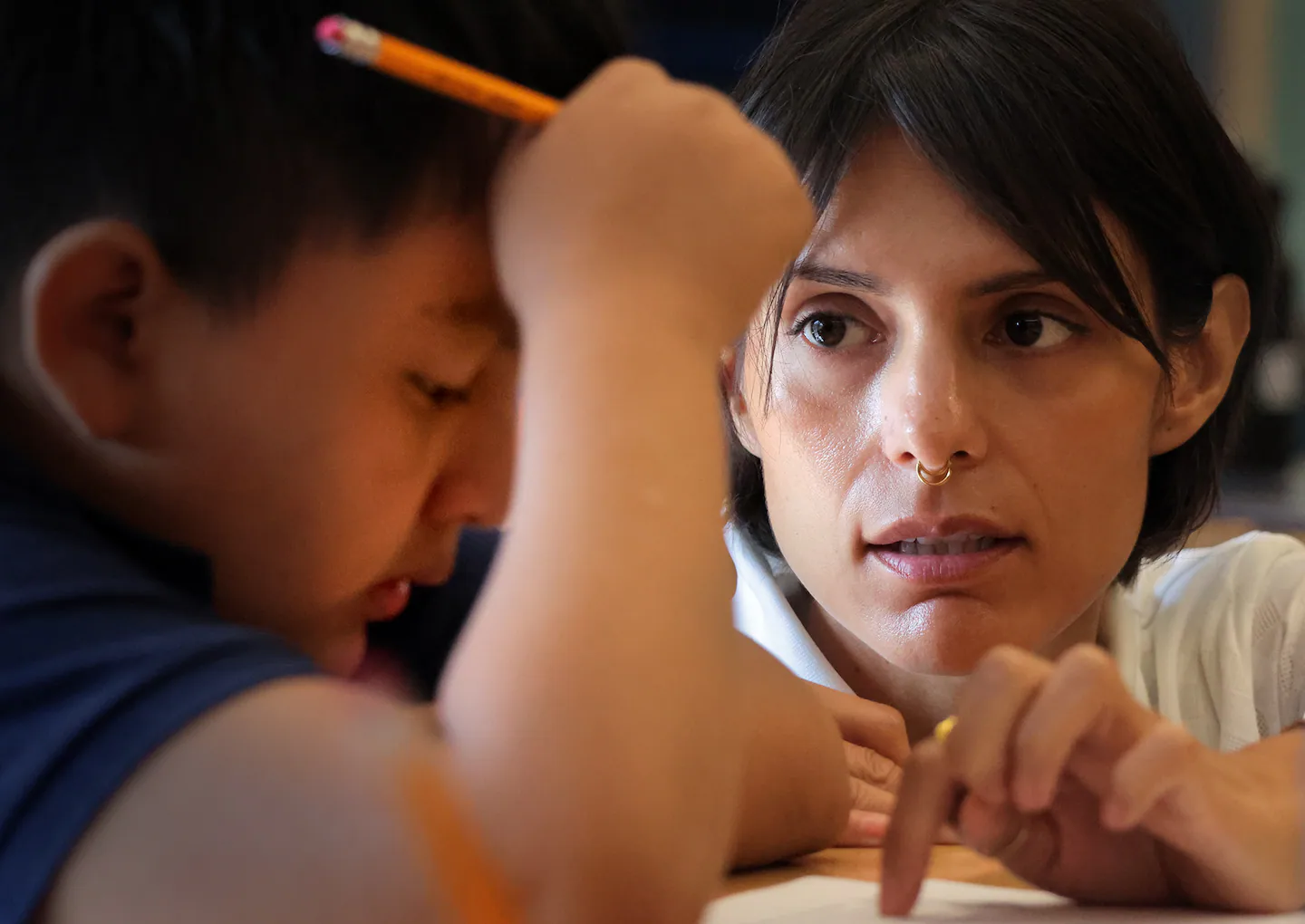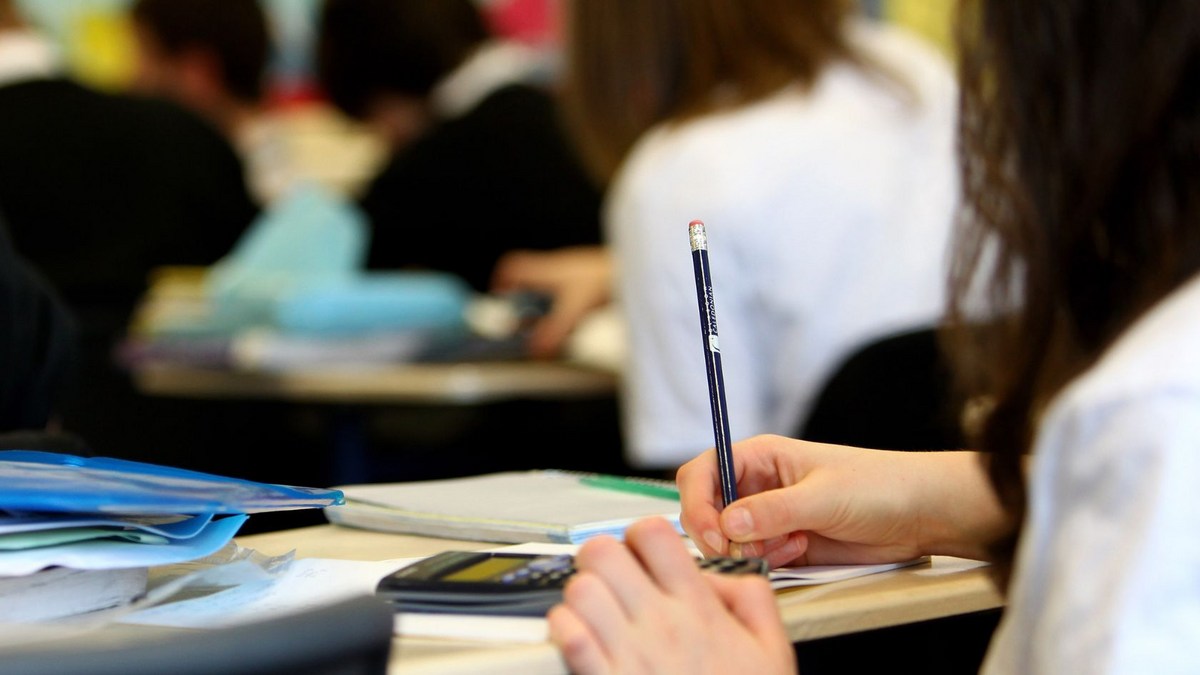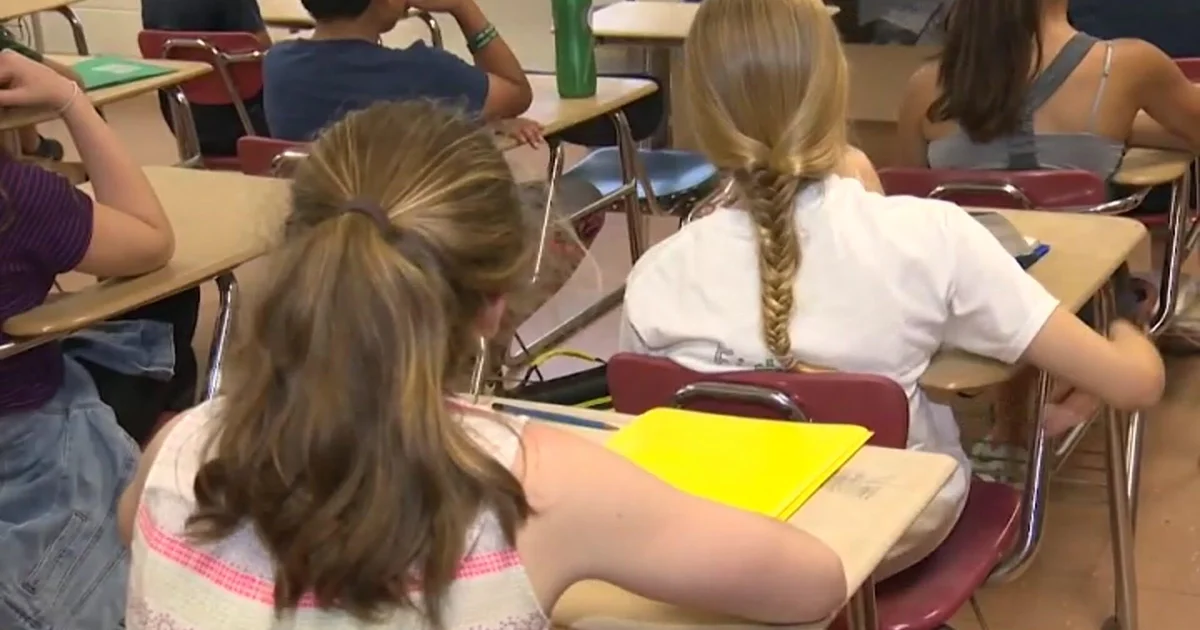
The Boston Globe asked thirteen local districts with high numbers of English learners whether they are facing enrollment declines, and whether such declines are connected to immigration issues, including deportations and fears of ICE.
Four districts provided enrollment numbers showing declines. Only Chelsea leaders said declines are partially connected to immigration. School districts do not submit official enrollment numbers to the state until October.
Students are constantly worried about family separation, said Gladys Vega, president and chief executive of the La Colaborativa, an immigration advocacy organization in Chelsea.
“When they go home, are the parents going to be at the dinner table?” Vega said “This climate of fear is depriving our young people from attending school, from being focused, from seeking their dreams of pursuing, in the future, higher education. How can you seek education if you’re constantly afraid?”
Vega said she was not surprised that Chelsea schools’ enrollment dropped. The student population fell to 5,750 this fall from 6,094last school year, a decline that will lead to a potential $6.6 million budget shortfall, district officials said. The loss of 350 students eclipses the decline during the height of the pandemic, when Chelsea lost 319 students, according to state data.
While the school system cannot pinpoint the reason for each student’s departure, officials keep track of where they transfer to and know that one-quarter of the students left the United States, often returning to their country of origin, said Superintendent Almudena Abeyta. Another one-quarter transferred to other districts in Massachusetts, while the majority left for other states.
“Our families are worried about students going to school and coming from school,” Abeyta said. “If there’s ICE in the streets, it’s probably going to be close to a school, because we have a total of 10 schools in a small area.”
Historically, Chelsea has welcomed many “newcomers,” or students new to the United States. This year, the number of such students has decreased 74 percent, said Daniel Mojica, director of the parent information center at the district.
“A lot of those families have decided to go back to their home country. We had one as recent as on Friday that went back to El Salvador,” Mojica said. “A lot of it has to do with what’s happening with ICE in the community. The way that individuals are being snatched up and then just put in these detention centers.”
In June, a 20-year-old Chelsea man was arrested four days after his graduation ceremony from Chelsea High School. The next day, a 19-year-old student went to an ICE office for an appointment and was detained. Both arrests shook the Chelsea community, leading many to avoid leaving their homes to avoid potential interactions with ICE.
Enrollment numbers determine school budgets in Massachusetts, and Chelsea’s estimated shortfall, which makes up about about 3.7 percent of its $150 million budget, will force district leaders to come up with alternative solutions to make up the difference, the superintendent said.
The potential budget loss would be “catastrophic,” said Sarah Neville, a member of the Chelsea School Committee who hopes the state will step in to help.
“Chelsea Public Schools is a gateway school district that welcomes and educates all. That means we are educating the people who are coming to this country for the first time with all the challenges that that entails,” Neville said. “The Commonwealth really has a responsibility to make sure that we have the resources to do that.”
Neville said community events are regularly getting canceled because residents are afraid of ICE, and event organizers don’t want to put others at risk.
Chelsea is not the only district facing enrollment drops this year. Marlborough Public Schools finished last school year with 4,728 students, and as of Sept. 9, the district’s enrollment is at 4,418 — a loss of 310 students.
In a statement, a spokesperson for the district said most students who left transferred to other schools in Massachusetts or did not elaborate further.
In a Boston School Committee meeting in early September, Superintendent Mary Skipper said there are complicating factors for returning students this year, including “the fear in the community.”
She said the district’s “newcomer” enrollment is down, but she did not provide numbers.
Skipper said in the September meeting the numbers fluctuate during the first few weeks of school, as officials identify students who are enrolled but haven’t reported to school.
Many district leaders are worried about losing students and the effect of ICE arrests on the students who remain.
From the windows of a school bus, Lexington High School students witnessed ICE arresting two men in early September, the Lexington Observer reported. In Plymouth last week, according to the Plymouth Independent, middle school students were given the opportunity to meet with a counselor after they witnessed an ICE arrest their bus driver described as “a possible abduction.”
Two Milford High School students have been arrested by ICE this year. One senior, who was arrested on his way to volleyball practice in May, spent six days in detention without a shower or sunlight. Earlier this month, a 16-year-old student was arrested on Milford’s Main Street and released about an hour later. Neither had a criminal record.
In Boston, nonprofit worker Yrmaris Matias, 40, said her neighbors are afraid of being a target of ICE, and are avoiding dropping off and picking up their children at school or walking them to bus stops. She’s stepping in to help whenever she can, offering to take her neighbor’s children to school.
Around her home in the South End, Matias said there are three schools and a day care in close proximity, and ICE agents are often stationed near the day care. She can’t count the number of times she has seen them in the neighborhood. “They’re everywhere,” she said.
Originally from the Dominican Republic, Matias is a naturalized US citizen, and she’s among many citizens of color who are worried about being targeted by ICE since the Supreme Court ruled that agents are allowed to question residents based on race.
“Fear is something that eats you little by little. We don’t want kids to live in fear. We want them to feel free and feel protected,” Matias said. “We don’t want kids to [think] ICE will be around and their parents will be taken away . . . for them, security and protection is their parents.”
Erik Berg, president of the Boston Teachers Union, said in a statement the union condemns recent incidents of ICE agents detaining parents and family members bringing children to Boston schools.
“These actions weaponize children’s daily routines, using them as pawns in immigration enforcement, and they undermine the very mission of public education,” Berg said. “This climate of fear disrupts classrooms, erodes trust, and damages the stability children need to thrive. Imagine being a child at school trying to learn while you’re worried about your mom being taken away by masked men — that’s no way to conduct school.”
Vega of the Chelsea immigration advocacy group said the ICE operations are traumatizing to children.
She said she recently met with a 14-year-old whose father was arrested during an immigration appointment. The teen came to Vega crying because she couldn’t say goodbye to her father.
“She doesn’t know where they’re going to take him. She doesn’t know if he’s going to remain alive. She says, ‘What about if they take him to Alcatraz? What about if they take him to CECOT [maximum-security prison] in El Salvador?’ Those are the questions,” she said.



